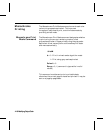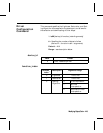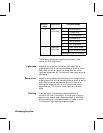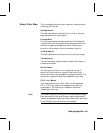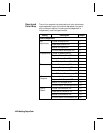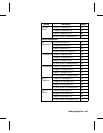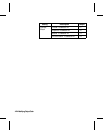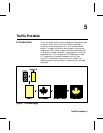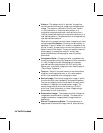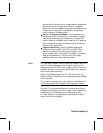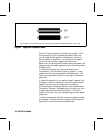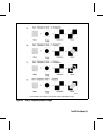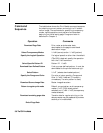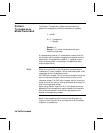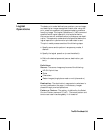
Pattern—The design which is “painted” through the
non-white area of the source image onto the destination
image. The pattern is defined by the Current Pattern
(?*v#T) command. It may be a color pattern or a
single-plane monochrome mask, such as the printer’s
internal predefined shading or cross-hatch patterns, or a
user-defined pattern. Foreground color is not applied to a
user-defined color pattern.
When printing a page, text and raster images are printed
using the current pattern. Once the current pattern is
specified, it stays in effect until another is selected or the
printer is reset. A reset returns the current pattern to its
default value (100% black). The current pattern does not
always apply to rectangular area fill, which uses
patterns defined by the rectangular area fill pattern
commands.
Foreground Color—Foreground color is selected from
the current palette using the Foreground Color command
(?*v#S). Foreground color affects everything except
user-defined color patterns and HP-GL/2 primitives.
Raster color mixes with foreground color (see Chapter 6
“Color Raster Graphics”).
Texture—Texture is another name for the combination
of pattern and foreground color, or for a color pattern
which is not combined with a foreground color.
Source Image—the Source Image is an image in which
the non-white bits are replaced by the specified pattern.
The source image functions like a stencil through which
the pattern is applied to the destination image. The
source image may be one of the following: HP-GL/2
primitives, rules, characters, or raster images (single
plane mask or multi-plane color)
Destination Image—The image onto which the source
image/texture combination is placed. The destination
image includes any images placed through previous
operations.
Source Transparency Mode—The transparency or
opaqueness of the source image’s “white” pixels as they
5-2 The PCL Print Model5-2 The PCL Print Model



